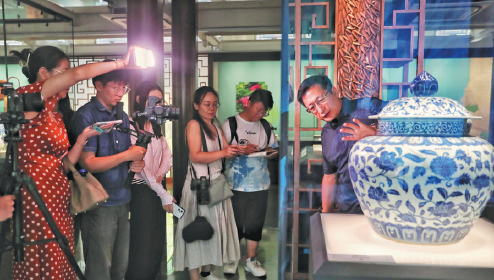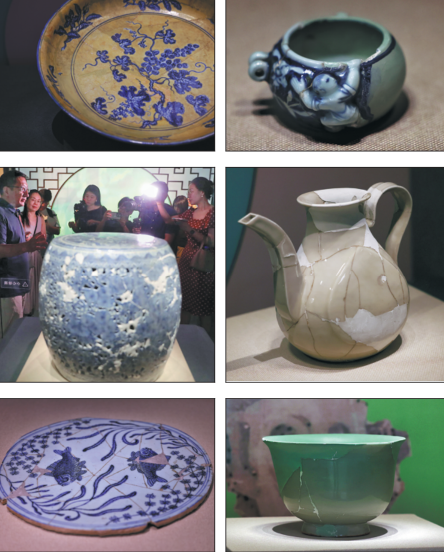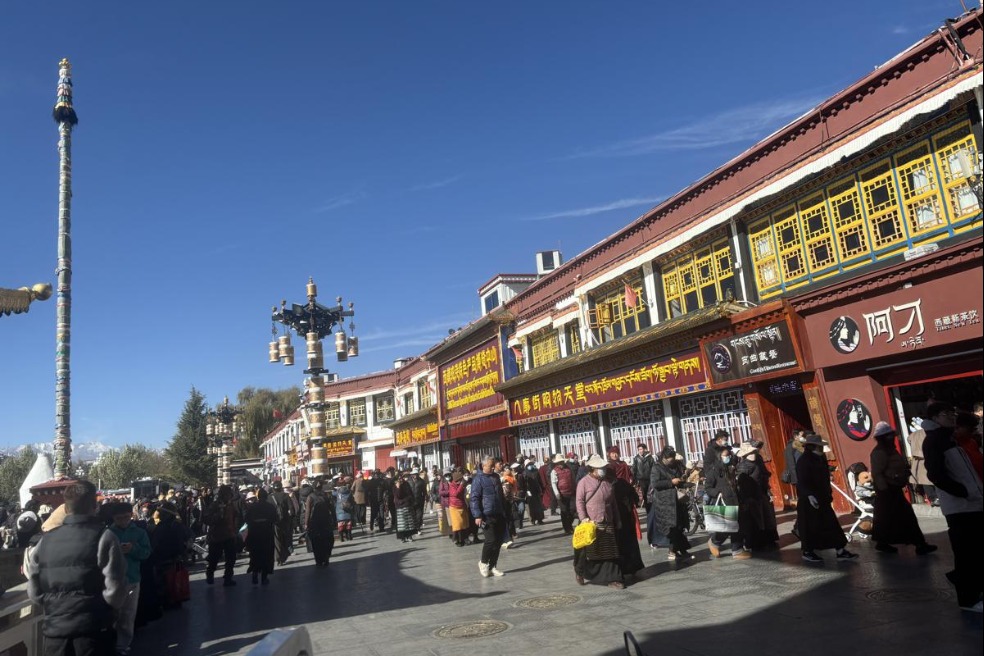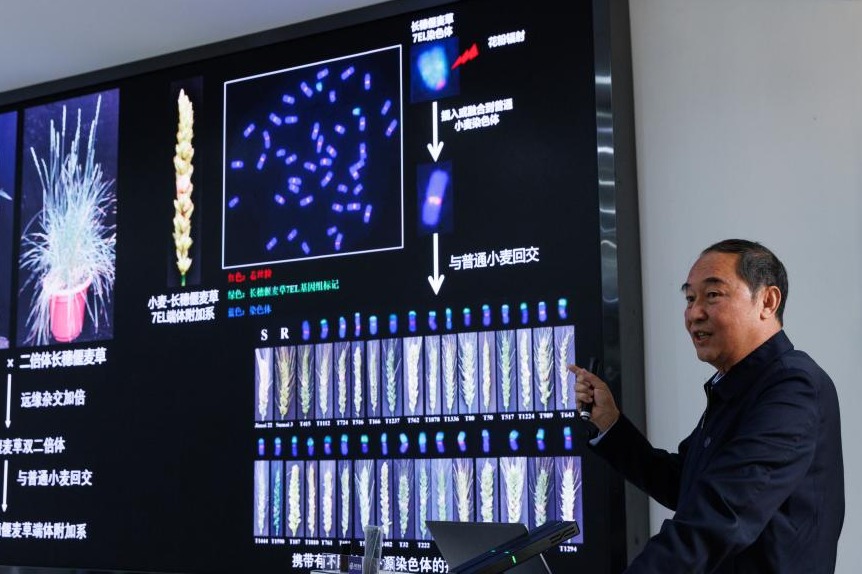Piecing together the precious porcelain past
Restored ceramic castoffs unearthed in Jingdezhen, Jiangxi province, take pride of place at Beijing exhibition, Wang Ru reports.

Along with Liling, Hunan province, and Dehua county, Fujian province, Jingdezhen in Jiangxi province has long been known as one of China's "three capitals" of porcelain-making.
In 1369, during the reign of Ming Dynasty (1368-1644)'s founding emperor Zhu Yuanzhang, an imperial factory for making pottery and porcelain for the court was set up, which later became known as the Imperial Kiln.
The kiln's fires burned continuously until the reign of Emperor Xuantong, the last emperor of the Qing Dynasty (1644-1911).
Over the course of its 600-odd years, the kiln attracted skilled craftsmen who produced a wide variety of exquisite objects. The complex nature of the process and the high standards to which imperial utensils were held, meant that many finished pieces were judged unsuitable, and were broken into pieces before being buried by the kiln.
In the 1980s, excavation of the site began. Since then, tons of porcelain pieces have been discovered and over 1,400 porcelain items from the Ming Dynasty have been pieced back together again.
An exhibition of these restored artifacts, which focuses on 99 flower-themed porcelain objects and the lifestyle and pleasures they reflect, opened on Aug 1 at the Ledao Hall in the Prince Kung's Palace Museum in Beijing. It runs until Aug 27.
According to Wang Lan, who is a consultant at the Jingdezhen Imperial Kiln Institute, the Prince Kung's Palace Museum, as a representative imperial Qing residential complex, is famous for its gardens, and so they have chosen porcelain with floral and plant patterns to reflect this.
As the items were made to serve as drinking vessels, tea sets, fruit trays, flowerpots and bird feeders, they also reflect the daily pleasures of the past.
Wang singles out one of the objects, a partly-finished doucai style case. "It is decorated to look like a landscape painting on a moon-shaped fan, and shows a garden corner bursting with spring life, birds, butterflies and flowers."
Doucai is a technique used in painting porcelain, where parts of the design are painted in a blue underglaze, and the rest is overglazed in different colored enamels.
The restored artifact is only blue and white. Wang says that after the first layer of blue and white patterning on doucai objects was finished, it was checked, and if it met the strict criteria of the day, it was sent on to be finished in colored enamel. If it failed, as the restored artifact had, it would be smashed into pieces.
"Although it is restored, I personally think that it's still a good piece, with great artistic value … it's really beautiful. It's a pity that it was smashed," says Wang.
He says that it was originally thought that doucai first appeared during the reign of Emperor Chenghua (1465-87), and reached its peak soon after. However, the excavation of the Imperial Kiln has revealed that an embryonic form of the technique existed during the time of Emperor Xuande (1426-35).
"Doucai porcelain made during the reign of Emperor Chenghua is viewed as one of the highest artistic forms of Ming and Qing decorative porcelain. It is also popular on the antiques market," says Wang,
He adds that in 2014, a doucai cup dating back to the reign of Emperor Chenghua was auctioned at Sotheby's Hong Kong for just over HK$280 million ($35.8 million).
He also mentions about a couple of restored blue and white ceramic cricket jars from the time of Emperor Xuande. He says that only two other such objects are known to exist today, one is now in the Suzhou Museum in Jiangsu province, and the other is in a gallery in Japan.
"The one in Suzhou doesn't have a lid, and the lid on the one in Japan doesn't match the rest of the jar very well. As a result, the jars we've found at the Imperial Kiln are extremely precious. We have found dozens that can be restored, in a variety of patterns, and most of the jars and lids are quite complete," says Wang.
"Emperor Xuande had good taste in art, and many of his paintings are now in the collection of the Palace Museum. The patterns on the cricket jars of his era stand out among all the porcelain produced at the time. Some experts even believe the emperor himself may have designed some," he adds.
Although the artifacts were originally viewed as faulty goods, and so were smashed to pieces, as far as Wang is concerned, they are still extremely important.
"Without the archaeological study of the Imperial Kiln, we would not have known of the existence of many kinds of ancient porcelain utensils, because they have not survived," says Wang.
According to Zhang Ai, deputy director of the exhibition department at the Prince Kung's Palace Museum, the exhibition also celebrates the 40th anniversary of the founding of the museum in 1983.
Ledao Hall has recently become the first exhibition hall at the museum to have a constant temperature and humidity, which is better for displaying artifacts, and there are plans for more exhibitions of this kind to be held there in years to come.


Today's Top News
- Xi urges central SOEs to contribute more to Chinese modernization
- Five continents, five rhythms in 2025
- Lawmakers review draft law to expand childcare services
- China's new-style tea brands find a hot new market in US
- Xi extends congratulations to Chilean president-elect
- Japan urged to stop provocative moves






























